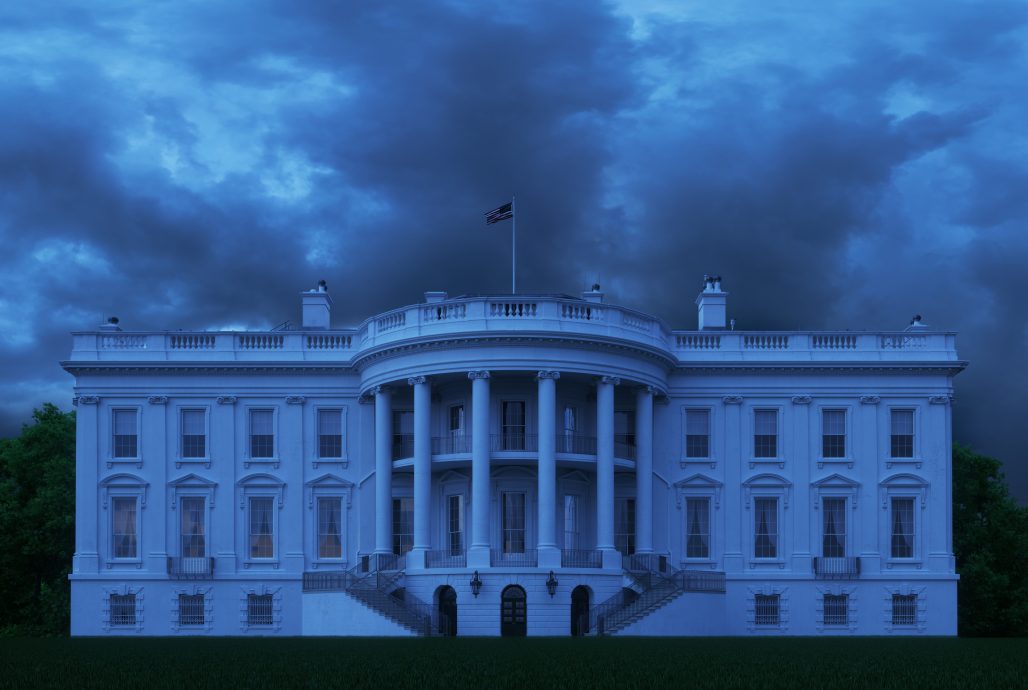The Breaking Point
The State of the Union Address only matters if some amount of institutional pride and constitutional legitimacy attaches to the remarks. A review of the Union possesses authenticity if the one making it demonstrates how his use of the office affirms our ongoing experiment in republican constitutionalism. The President, that is, must vouchsafe to the members of Congress that the executive powers used have been within the law and strengthen the Constitution, even while dealing with the practical problems at hand.
But this really hasn’t been true for some time, and it seems fanciful to even say it. As you, the informed reader, know, chief executives use the occasion to make a full court political press, along the way touting their accomplishments, chastising the opposition party and, to keep things honest, taking a few swipes at their own party. Oh, and when the American heroes seated in the audience are given a shout-out, we clap fervently. Go Team America!
We’re only surprised now when a President actually gives the game away by, say, reprimanding the justices of the Supreme Court seated mutely before him, for an unappreciated ruling. So it was no surprise, then, that President Trump’s State of the Union address last night predictably provided to Congress and the public his full list of policies that must be implemented for the continued rejuvenation of America. The President does not really communicate to Congress but to the country, and with President Trump plenty of before and after speech tweeting.
When it comes to the current President’s norm-busting, some of it has been refreshing, some of it has not. It would have been a welcome surprise for Trump to break with Woodrow Wilson’s century-old precedent of making the SOTU a spoken address to the Congress. But a written communication, as was done in olden days, isn’t really a contemporary possibility. Maybe a tweet-thread/storm to Congress could now suffice? It would be hard, I think, to reduce the SOTU to an even more infantilized spectacle than it has become.
Seeking enlightenment in this regard, I count it a wonderful opportunity to have recently read Jeffrey Tulis’ masterful work, The Rhetorical Presidency, for an upcoming podcast. First published in 1987, Tulis’ book has received praise as a truly outstanding assessment of how Presidents have understood and practiced the art of rhetoric to fulfill their role or even extend it beyond what is considered constitutionally permissible.
Tulis’ book breaks down presidential rhetoric into three categories: the Old Way, the Middle Way, and the New Way. The Old Way largely prevailed for most of the 19th century. Presidents didn’t speak to the public directly to gin up support for policies or agendas. They spoke with formality, usually in writing, to Congress almost exclusively, and here the President would detail how he had met his constitutional duties, with only a general outline of policy direction. Citizens reading these various forms of written communication would have to raise their own level of constitutional understanding, as they weren’t the primary audience. Tulis notes that those who violated these norms during the 19th century, cough Andrew Johnson, paid dearly for their rhetorical transgressions.
Four concerns shaped this “common law” understanding of acceptable communications from a sitting President: demagoguery, republicanism, independence of the executive, and separation of powers. Notably, preventing the rise of demagoguery—that is, the leader who would purposely divide Americans into opposed groups—required a President who was independent from popular tumults and from Congress. Conserving republicanism against its deterioration into a populist-driven democracy entailed certain forms of behavior vis-a-vis Congress and the citizenry. The President should use his authority, as Publius noted, as an auxiliary precaution to defend his office and the Constitution from popular passions. Thus, we can say that the executive’s task was to embody the defense of the Constitution with high formality and regard for his office.
But this 19th century common law did not last. We can arrogantly draw our usual conclusion that things changed, technology sped us up, and the government had to get bigger, and with it the powers of the presidency. Tulis’ response, however, is worth considering. This Old Way didn’t doubt the need for a strong President, or for a powerful national government; it assumed them. And under the Old Way, it was thought that a President insulated from popular pressures, incoming and outgoing, would be more constitutionally equipped to run such a government. Thus, an ever-expanding conception of the presidency, one that believes with Woodrow Wilson that “The President is at liberty, both in law and conscience, to be as big a man as he can,” is the one finally incapable of acting constitutionally. Or, we might add, even competently.
While the definitive switch in soft constitutional rules governing presidential rhetoric changed during Theodore Roosevelt’s administration, Tulis largely accepts the 26th President’s justification for that change. TR argued that he had to openly campaign for the Hepburn Act of 1906 creating the Interstate Commerce Commission and with it, the modern administrative state, in order to save the core constitutional purposes of our country. Convenient. The industrial plutocrats needed chastening, but so also did the incipient socialist agitators, TR proclaimed. Maybe. But if Teddy didn’t quite alter the constitutional furniture of executive power, Wilson surely aimed to, and he wasn’t quiet about it. Thus the New Way arrived, of Presidents who democratically campaign almost incessantly for their policies.
Gone is the lodestar of constitutional formality and the costs imposed have been steep. Again, Tulis:
Symptomatic of the larger changes in form would be the fact that only half of the twentieth-century inaugural addresses even mention the word Constitution (or any of its provisions), and none of the twentieth-century addresses contain analyses of the meaning of the Constitution.
Russell Muirhead, in his Foreword to the revised edition of The Rhetorical Presidency, observes that “what we need is diagnostic power, or an account of politics that empowers us to diagnose the health of our politics, to assess what parts are in good or bad repair, to see what might be treated and even cured.” Looming in Muirhead’s thought is that our politics is the element that is in bad repair. But politics is the enterprise of free persons. Things are unpredictable, but might we know who we are and where we are likely going? The answer is a tenuous yes. We should begin with Tulis’ “profound diagnosis of the American presidency” in order to help us understand “whether the presidential powers that were created to make the Constitution work might be used, finally, to bring it down.”



